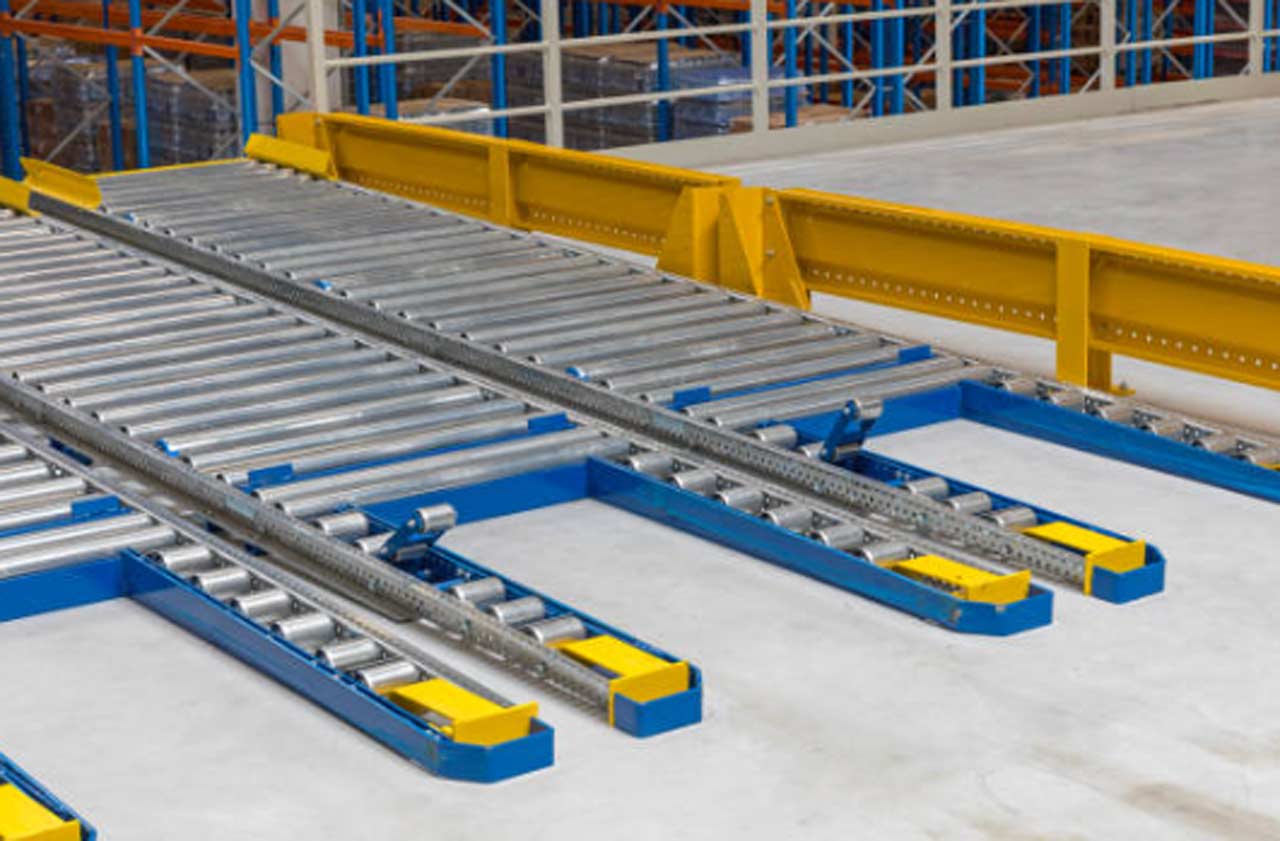 Efficiency and effectiveness are crucial qualities continually demanded in the logistics sector, which centers on the proficient handling of goods during transportation. Efficiency is an essential component in the field of logistics. Gravity conveyors are highly advantageous for efficiently transporting things. Despite the abundance of tools and technology available to us, this is the current situation. These gravity conveyors aid manufacturing organizations, distribution centers, and storage facilities in guaranteeing the punctual and effective completion of their operations. This is facilitated by the utilization of these conveyors. This detailed study offers a meticulous examination of gravity conveyors, encompassing all the essential details. This paper provides a comprehensive overview of the functioning, many categorizations, potential applications, and advantages of gravity conveyors.
Efficiency and effectiveness are crucial qualities continually demanded in the logistics sector, which centers on the proficient handling of goods during transportation. Efficiency is an essential component in the field of logistics. Gravity conveyors are highly advantageous for efficiently transporting things. Despite the abundance of tools and technology available to us, this is the current situation. These gravity conveyors aid manufacturing organizations, distribution centers, and storage facilities in guaranteeing the punctual and effective completion of their operations. This is facilitated by the utilization of these conveyors. This detailed study offers a meticulous examination of gravity conveyors, encompassing all the essential details. This paper provides a comprehensive overview of the functioning, many categorizations, potential applications, and advantages of gravity conveyors.
Gravity conveyors are a highly efficient and uncomplicated method of transporting things, as they function without requiring any additional power supply. Most conveyors primarily utilize motors and electrical energy, commonly known as electromagnetic energy, to enable the transportation of products along a specified path. Gravity conveyors harness the gravitational pull to enable the smooth transportation of goods along a predefined route. As a result of this fundamental principle, they offer numerous benefits for material handling tasks, including cost-effectiveness, simple installation, and low maintenance requirements. All of these factors contribute to the overall advantage.
The following are examples of several types of gravity conveyors:
Roller Conveyors: A roller conveyor is a special category of conveyor that is differentiated by its wheeled structure. This structure makes it possible for goods to be transported across the surface of the conveyor without any difficulty. The fact that they are available in a wide range of sizes and shapes, including straight sections, curves, and spurs, makes them excellent for conveying loads that range from medium-duty to heavy-duty. They are quite adaptable.
Skatewheel Conveyors: An assortment of wheels that are attached to axles are used in the construction of each and every individual skatewheel conveyor. In light of their adaptability and inexpensive cost, they might be utilized for the transportation of smaller packages and weights that are less substantial. The creation of layouts can be accomplished through a wide variety of approaches, and they are advantageous in circumstances in which product orientation does not hold a substantial amount of relevance.
Gravity Chutes: Through the use of the force of gravity, objects can be transported from one level to another through the use of sloped roadways or slides. On the other hand, gravity chutes are also sometimes referred to as gravity chutes. In addition to their ability to offer a controlled and gentle drop for fragile goods, they are frequently used to assist the transfer and sorting of objects between levels within a structure. They are also used to facilitate the movement of objects between floors.
The following are some of the applications that gravity conveyors are considered for:
Gravity conveyors are vital in the warehousing and distribution business because they efficiently transport goods from receiving areas to storage areas and then to shipment destinations. Consequently, gravitation conveyors play a crucial role in warehouses and other logistical facilities. Due to their enhanced efficiency in order picking, restocking, and cross-docking, the order processing is accelerated, resulting in increased throughput. Gravity conveyors facilitate the transportation of finished goods, raw materials, and work-in-progress to the next stage in the production and assembly processes at every level. They have the ability to make a substantial impact on enhancing assembly line efficiency, streamlining work procedures, and decreasing reliance on manual labor.
Gravity conveyors are installed at distribution and fulfillment centers to facilitate many tasks in the retail industry, including transporting goods, packaging items, and organizing inventory for both in-store and online sales, among other duties. Online retail firms heavily depend on them for their operations due to their versatility and scalability, allowing them to be used in many ways and adjusted according to business needs.
A number of advantages are related to gravity conveyors, including the following among them: a good value for the money: The implementation of gravity conveyors is economically feasible for businesses of any size since, in comparison to propelled conveyor systems, gravity conveyors require a relatively smaller initial expenditure. The absence of electrical components and the absence of continuous energy consumption are two of the reasons why these systems offer long-term cost benefits in terms of both construction and running expenses.
This is because gravity conveyors are widely available in a wide variety of configurations, which, because to their adaptability and versatility, make it possible for them to be utilized in a variety of settings. Adaptable to accept a wide variety of product sizes and types, these conveyor systems can support linear sections, curves, inclines, and declines in addition to other geometric configurations. Also, they can be altered to fit the dimensions of your room. On top of that, they can be adjusted to accommodate surfaces that are not uniform.
The dependability of gravity conveyors and the ease with which they can be operated are easily among the most useful elements of these machines. Furthermore, they are less difficult to keep up with. As a result of having a smaller number of moving parts, motors, and drive systems, these gadgets require less maintenance and are more resistant to malfunctioning. This is because they have fewer moving parts. The application of oil on a regular basis and the performance of routine checks are frequently sufficient to ensure that they continue to function in the best possible manner.
There is no requirement for the inclusion of any additional energy resources when it comes to the transportation of objects through the employment of gravity conveyors. Not only does this natural energy efficiency help in the reduction of running expenses, but it also contributes to the preservation of the environment by reducing the amount of carbon emissions and the amount of energy that is consumed.
Certain individuals are of the belief that gravitational conveyors are of great assistance when it comes to the transfer of various items. The low cost, versatility, and few maintenance needs of these products make them extremely valuable across a wide range of industries. It doesn’t matter if these conveyors are put into place to enhance industrial processes, make warehouse operations easier, or increase e-commerce fulfillment; they are an essential component in significantly increasing both productivity and efficiency. It is essential for businesses to have a complete understanding of gravity conveyor operation, the numerous types of gravity conveyors that are available, the possible uses of gravity conveyors, and the benefits that gravity conveyors offer in order to be able to effectively manage the dynamic material handling demands of organizations.






